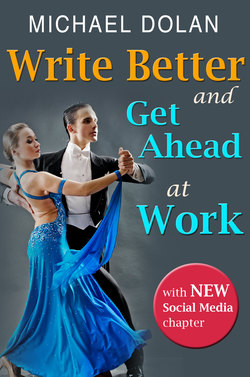Читать книгу Write Better and Get Ahead At Work - Michael Dolan - Страница 18
На сайте Литреса книга снята с продажи.
Reader Point of View
ОглавлениеSo far, we have discussed leaving out information or including it. Faced with the diverse amount of information coming to anyone’s workplace, how do you determine what information is useful for a particular piece of writing and what information is unnecessary? The reader will tell you.
You cannot understand the writing problem as either deciding what to put in or as selecting what to leave out. Both approaches are too narrow. Determining the most effective content means “selecting” among many conclusions, examples, anecdotes, recommendations and facts.
The most effective method of selecting what to include in your writing is to identify what interests the reader. Too often the wordy or clumsy message merely includes content that has no bearing on the reader; it is included only because it interests the writer.
To decide what content will most likely cause the reader to take the action you want, you must adopt the reader’s point of view. Taking the reader’s point of view is a personal attitude as well as a literary technique.
The following section lists three different versions of a message about recycling. Examine each closely for point of view. See how each subsequent rewrite gains strength and focus by shifting more toward the reader’s point of view. (Here is a tip: Writing from the writer’s point of view uses the words “I,” “we,” “us,” and “my.” Writing from the reader’s point of view includes the words “you” and “your.”)
